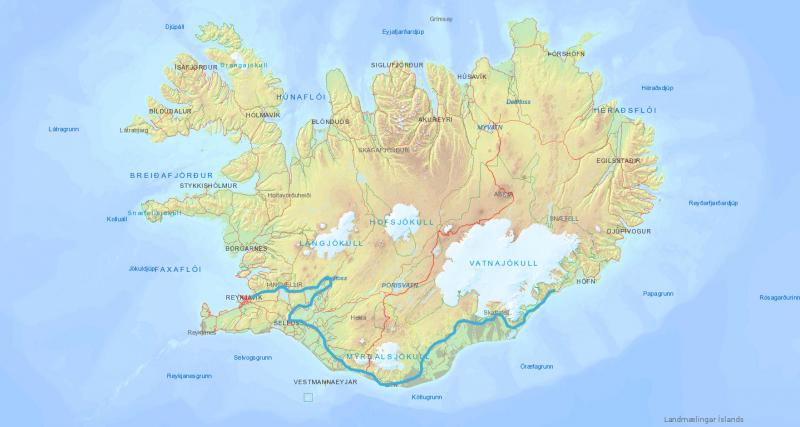Your planned itinerary is too ambitious for a hiker not experienced with Iceland. It might be fine, but might is not enough. Considering the uncertainty of hiking off-trail in unknown terrain, you need to have a plan that allows shortening/escaping if your route fails.
Some things that are different in Iceland compared to other parts of Europe:
- Too much water. Even tracks cross rivers that, after rain or heavy snowmelt, might be too dangerous to cross. Some rivers are very wide and the water level in rivers might rise so quickly that you could find yourself stuck on an island. There are big river crossings between Þjórsarver and Nýidalur, which are included in your itinerary. It might work. Or not.
- Too little water. Yes, even in the same area. The interior of Iceland is a desert. Your route passes through Sprengisandur. The verb sprengja means to ride a horse to death. People used to take detours of hundreds of kms to avoid this area. Your route also passes between Nýidalur and Asjka; in this area, there is no drinking water for 50 km. The only water you pass might be too silty to drink. You can handle this if you come prepared, but it might kill you if you treat it like Norway and you don't come prepared for a desert.
- Wind. In Sweden, they think 20 m/s is really windy. In Iceland, you might get 50 m/s wind gusts. Good luck surviving that.
Having said that, the southern part of your route is relatively easy, as it follows Fimmvörðuháls and Laugavegur, which are popular, very busy hiking routes. You can easily hike those on your own, as you're never far from other people and thus rescue. But when you're off the beaten track in Iceland, you should know what you're doing. I've hiked in Iceland, the Alps, northern Scandinavia, the Canadian Rockies, the Ural Mountains, and elsewhere. In Iceland I've hiked at Lónsöræfi as well as around Hofsjöküll, passing through Þjórsárver. A trail on an Icelandic topographic map is not always a trail; it might just be a route, which might mean no more than a cairn every couple of km, if at all. A route may cross deep, wild rivers and may require scrambling along steep scree with raging rivers below. I've tried to follow routes marked on Icelandic maps and found the terrain completely unpassable. In a total of around 20 days of Icelandic hiking, I met exactly one other hiker. Such lonesome terrain one rarely sees even in remote off-trail hiking in Swedish Lapland.
Considering that Iceland is very different from the Alps or Scandinavia and you are not experienced with it, you should choose an itinerary that is less ambitious and more flexible. I expect some parts of Iceland are easier than Lónsöræfi, and if you hike on fjallvegur you can make more distance, of course. So maybe you can do it, but maybe is not good enough. Choose an itinerary you can shorten or lengthen based on your progress, get familiar with the landscape, and then decide if you can attempt the coast-to-coast hike another year.

Hnappadalsá in Lónsöræfi, 20 September 2015. This river was hard to cross, and would have been out of the question without my wading staff.
See also advice on Outdoors SE for rivers.
In any case, whatever you do, DO NOT SET OFF WITHOUT A SATELLITE PHONE/PAGER or at least a PLB. A satellite pager or satellite phone is the better alternative, because you can receive weather forecasts, which can be life-savers. You don't want to be stuck in the Icelandic highlands in a snowstorm.
 In red the part I'm not sure if feasible
In red the part I'm not sure if feasible

